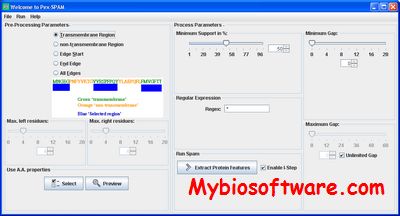ACME
:: DESCRIPTION
ACME is a state-of-the-art open-source C++ software for reconstructing membranes to achieve high-quality whole cell segmentations. The software enables the quantification of cell morphologies, cell size, tissue interfaces, arrangement in tightly-packed tissues, and tissue geometry from time-lapse image sequences. The software is generic, modular, scalable to large datasets, and provides an easy API for interfacing with other software systems.
::DEVELOPER
:: SCREENSHOTS
N/A
:: REQUIREMENTS
- Windows / MacOSX /Linux
:: DOWNLOAD
:: MORE INFORMATION
Citation
ACME: Automated Cell Morphology Extractor for Comprehensive Reconstruction of Cell Membranes.
Mosaliganti KR, Noche RR, Xiong F, Swinburne IA, Megason SG.
PLoS Comput Biol. 2012 Dec;8(12):e1002780. doi: 10.1371/journal.pcbi.1002780. Epub 2012 Dec 6.

